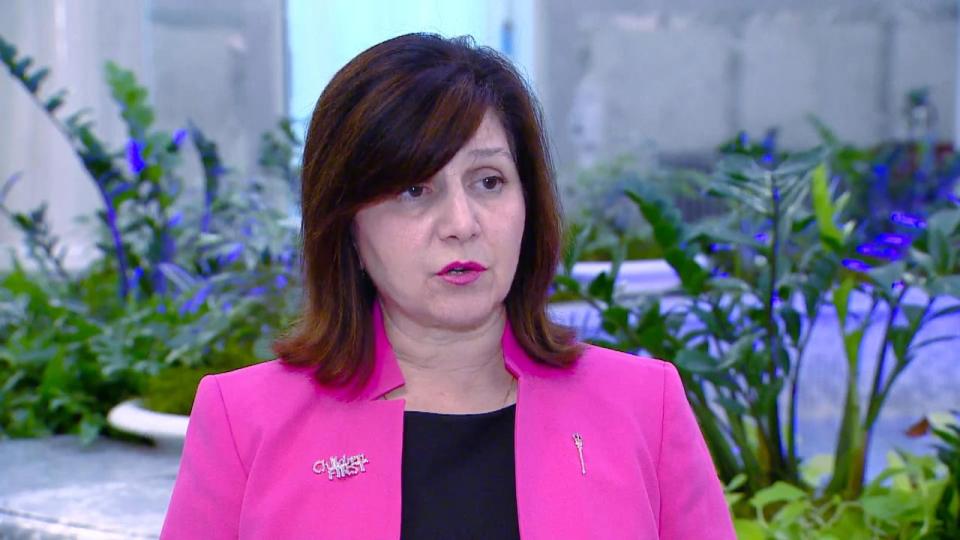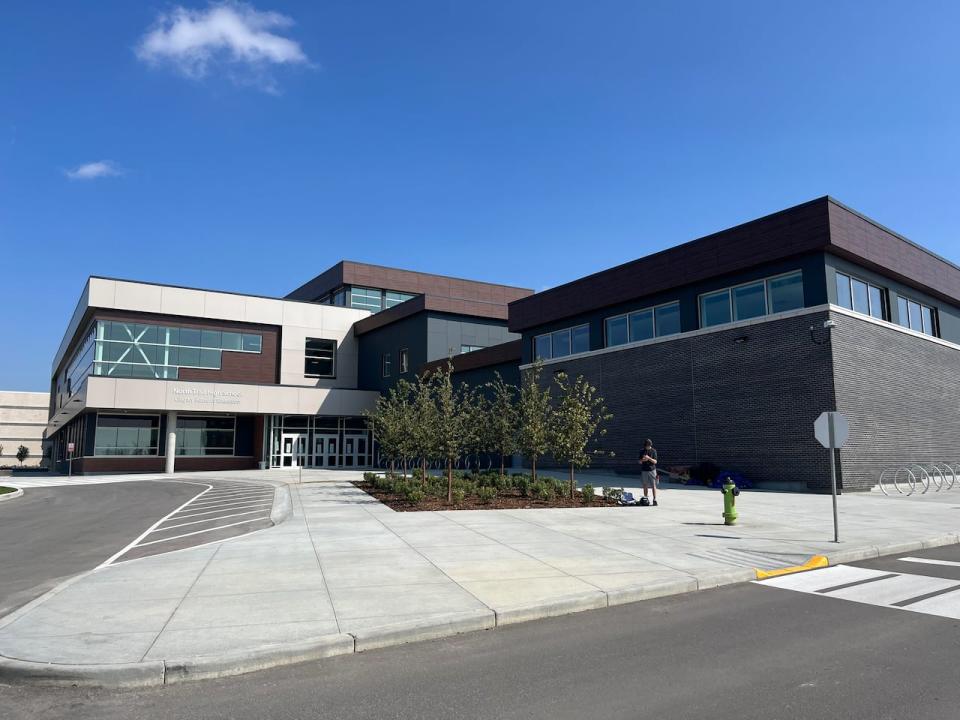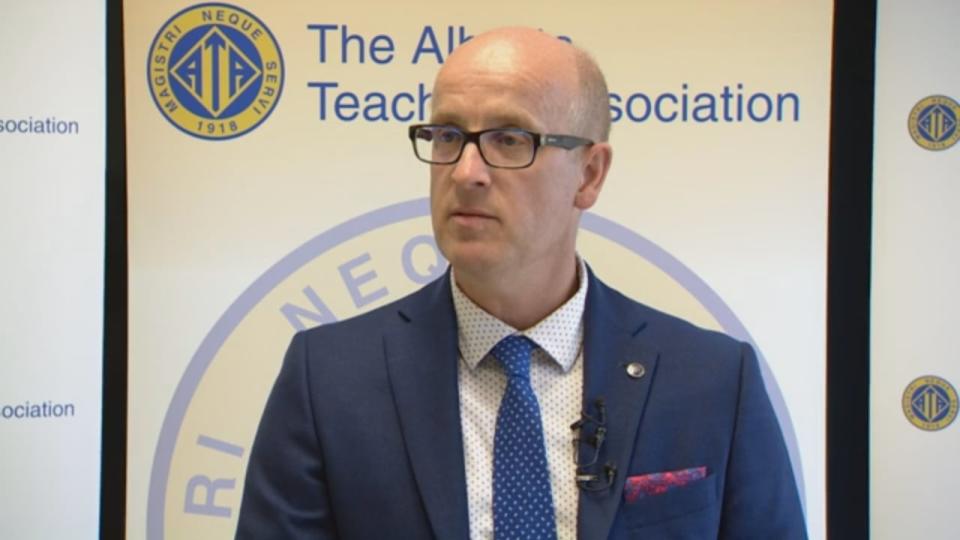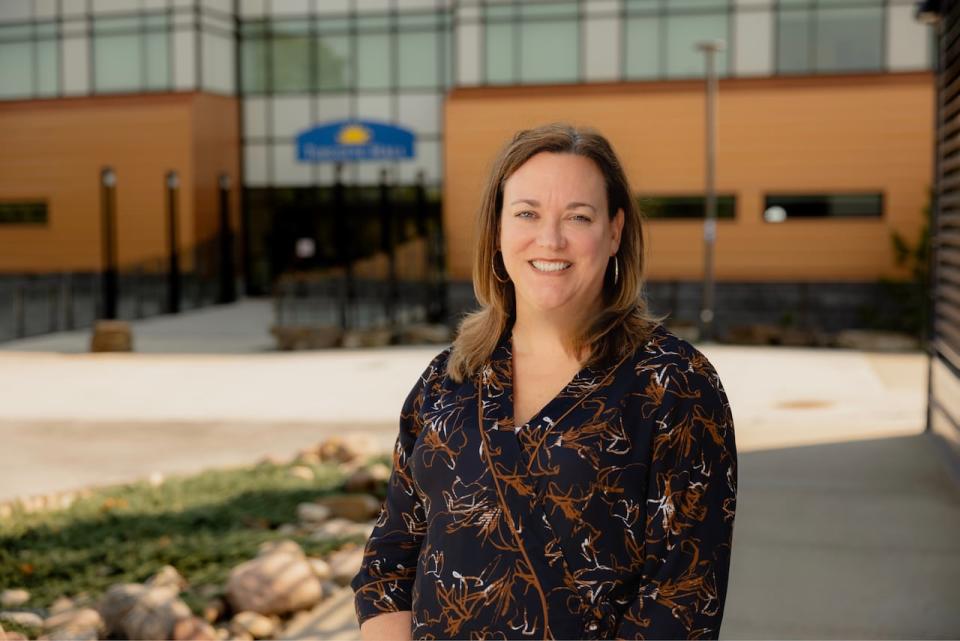Data won't tell us how crowded Alberta's schools are anymore — so we went asking

Students in Alberta schools are back to classes this week, not that far removed from a challenging period of time upended by the COVID-19 pandemic and defined by virtual learning.
They'll enter a school year in which you'll likely be hearing a lot about schools being overcrowded with students. There are a lot of reasons for that — with various remedies proposed — which we'll get into later.
What isn't clear at this stage is exactly how overcrowded Alberta's schools are.
In 2019, the provincial government ended a practice of publicly reporting how many students were in each class at each public, charter and separate school in the province.
It followed then-Alberta education minister Adriana LaGrange suggesting that funding to reduce class sizes had failed.
"What we're hearing from school boards is that, as a whole, this has not met its objective and that we have continued to throw ever increasing dollars — $291 million alone [in 2018/19] — and we have not moved the needle at all in terms of addressing the class size issue," LaGrange said in 2019.

Adriana LaGrange, pictured in a file photo during her time as education minister. (Scott Neufeld/CBC)
Guidelines for class sizes — for example, fewer than 25 students in Grades 7 to 9 — had been suggested in 2003 by Alberta's Commission on Learning, though the recommendations were not always followed over the years. Still, over that period of time, provincial governments spent billions trying to shrink class sizes.
As part of the 2017/18 school year, nearly 68 per cent of CBE classes across all grades exceeded target levels, up 47 per cent from a decade earlier.
Albertans don't have the same luxury today of knowing precisely how crowded classrooms are, but there are various pieces of the puzzle parents can piece together to get a sense of what's going on.
A survey conducted by the Alberta Teachers' Association (ATA) in late 2022 suggested that four in 10 Alberta teachers have class sizes over 30 students, with the growth in class sizes most prominent in elementary grades, high school science and math, and junior high school math, as well as English language arts.
All week, The Calgary Eyeopener is highlighting the impacts of rising enrolment on schools in the province. As a part of that series, CBC News went asking all involved about what they've been seeing.
Concerns about learning impacts
Calgary parent Misty Russell has two kids, aged six and eight, who attend school in the southeast. For her, the biggest concern she has about class sizes involves the limited amount of attention a teacher is able to provide.
"When there's so many [more] kids-to-teacher ratio, the kids don't necessarily get the things that they need, right?" she said.
Amanda Mauch's daughter is further along in her schooling in Grade 10. Mauch said the opening of the long-awaited North Trail High School in northeast Calgary in late August was huge for her family.
"I was dreading having to stick my daughter on a bus for an hour to go to Crescent Heights," Mauch said.

After more than a decade in the making, North Trail High School in northeast Calgary opened its doors this year, welcoming more than a thousand students. (Terri Trembath/CBC)
The new high school was a big need in the community given recent growth and the number of young families in the area, in Mauch's view. But she worries about even this new school growing overextended.
Last year, Mauch said her daughter was in a "double class" — two classes being combined together, with two teachers, in a large room.
"They had 60 kids in one class. And that's just not a really conducive learning environment for any kid," Mauch said. "I have no idea how the teachers manage that."
Jason Schilling, the president of the ATA, is familiar with the situation described by Mauch, which sees two classrooms combined and assigned a "learning team," which consists of two teachers, sometimes three, and several educational assistants.
What teachers are saying
Many Calgary teachers have been struggling with those very issues. CBC News is not identifying teachers in this story because of their concerns that they might face repercussions at work.
One Calgary elementary school teacher says these are the worst conditions she's ever seen at work. As of right now, her classes this year will have 35 students in them — the biggest size of her career.
Another Calgary chemistry teacher said things have really changed in her classroom, which has led to impacts for students. Twenty years ago, she would have been horrified at 36 students in a chemistry class, given the impacts on group sizes in lab work. With 39 or 42 students in a class, she's forced to do fewer labs with larger groups.
"Students are really missing out on, really, even that practical aspect. We hear from the University of Calgary that students don't know how to do some basic skills in the lab that they used to be pretty competent at," she said.
A third teacher, who is a French immersion teacher at a Calgary Catholic School, said he's had more classes above 30 students than below for more than a decade. He said it feels like the new norm.
"I remember I did have a class of under 24. And you just see how that performance skyrockets when you have less kids," he said.
Influx of students in the system
As the new school year kicks off, the ATA is expecting an increase in class sizes compared to last year. That's because of an influx of students into the system.
The Calgary Board of Education says it is projecting 138,000 students this year, which is an increase of around 7,000 kids from last year. The Calgary Catholic School District, meanwhile, says that as of Sept. 5, its enrolment is 61,000 students, which represents approximately a 3.5 per cent change year over year. That's an increase of around 2,100 students.
Edmonton Public Schools says it is experiencing significant enrolment growth and increased utilization of schools, with around 5,000 more students expected, bringing its student population to more than 114,000. That will put utilization around 85 per cent across the division. Over the last 10 years, the division's utilization rate has risen 14 per cent from 68 per cent to 82 per cent.
Additional challenges will emerge, in the ATA's view, because there won't be the same level of hiring of new teachers to offset the increase in population.
New money is on the way that the province says is intended to alleviate pressure. A statement from Alberta Education Minister Demetrios Nicolaides' office points to increases in education funding in Budget 2023 — by almost $2 billion over the next three years — which the province said will help to hire up to 3,000 educational staff and build new schools.
The CBE says its budget for the 2023-24 school year has increased by $130 million to nearly $1.5 billion. That extra money means the CBE can hire more teachers and education assistants, along with other staff, according to a spokesperson.
The increases will specifically target schools where there is enrolment growth, or where a school has been designated as an overflow school. In a statement on Aug. 29, a spokesperson with the CBE said it anticipates increasing full-time staffing by 774 positions, 747 of which will directly "deliver and support" learning in schools.
"We anticipate that class sizes will remain roughly the same as last year," spokesperson Joanne Anderson wrote in a subsequent statement.
The CBE has 60 schools that are at or above capacity, according to a report released in June, which represents almost one out of every four public schools.
The CCSD, similarly, said it anticipates hiring 75 new teachers to support projected student enrolment growth, as well as over 40 education assistants.

A file photo of Alberta Teachers' Association president Jason Schilling. Schilling says class sizes are growing across the province, according to ATA member surveys. Many urban jurisdictions are seeing massive increases in class sizes, while some rural areas are seeing a decline in their enrolment, according to Schilling. (Trevor Wilson/CBC)
The ATA believes the numbers in the provincial budget are not sufficient. An October 2022 Fraser Institute report suggested Alberta fell from the third-highest per-student funding of Canadian provinces in 2012-13 to the lowest in 2019-20. The ATA referenced the spending levels in February, before the release of the budget.
"We needed to see $1.2 billion in this budget, just in spending on students in education, to bring us to the Canadian average," he said. "Not to the top, where we used to be 10 years ago. We used to be number one."
No 'one-size-fits-all' solution
The ATA is also critical of the funding formula in place, which it claims underfunds students new to the system.
There are also higher demands in certain areas of the province like Calgary, particularly in neighbourhoods that are quickly growing in population without schools to serve them, Schilling said.
Nicolaides, the current education minister, will discuss education in the province with the Calgary Eyeopener on Friday, but his office provided a statement on Aug. 31.
"Locally elected boards have the autonomy and responsibility to determine their own class sizes and direct Alberta's investment where it makes the most impact in the classroom," the spokesperson wrote.
Lisa Starr, dean of the faculty of education at the University of Lethbridge, said parents may be quick to assume that this all has much to do with finances — and often, they're not wrong.
"If we don't have the financial support for schools, in terms of infrastructure, and being able to staff schools appropriately, then inevitably, class sizes get bigger, and schools get more crowded," Starr said.

Lisa Starr, dean of the faculty of education at the University of Lethbridge, said overcrowding adds additional stress for teachers, which can cause a ripple effect “far greater than what most people understand.” (Submitted by Lisa Starr)
Though she would argue that a greater investment in education is likely to yield a positive result if it's thought through wisely, Starr said there really isn't a one-size-fits-all solution here.
But the key, in her view, is to get everyone around a table to talk through these issues, which historically is difficult given the number of players involved.
"The biggest challenge is getting the right people in the room to have the conversation, and realizing that we can't all get exactly what we want," Starr said.
Through all of this, data would be valuable to quantify all of what's being heard from the ground, in Starr's view. If schools have increases in class sizes and see decreases in the amount of contact time, those two pieces of information inform each other, she said.
"From a decision-making capacity, if you really want to make evidence-based decisions, which I would argue are important, then you need the evidence," she said. "If you're not tracking it, you don't have the evidence to make a decision either way."


